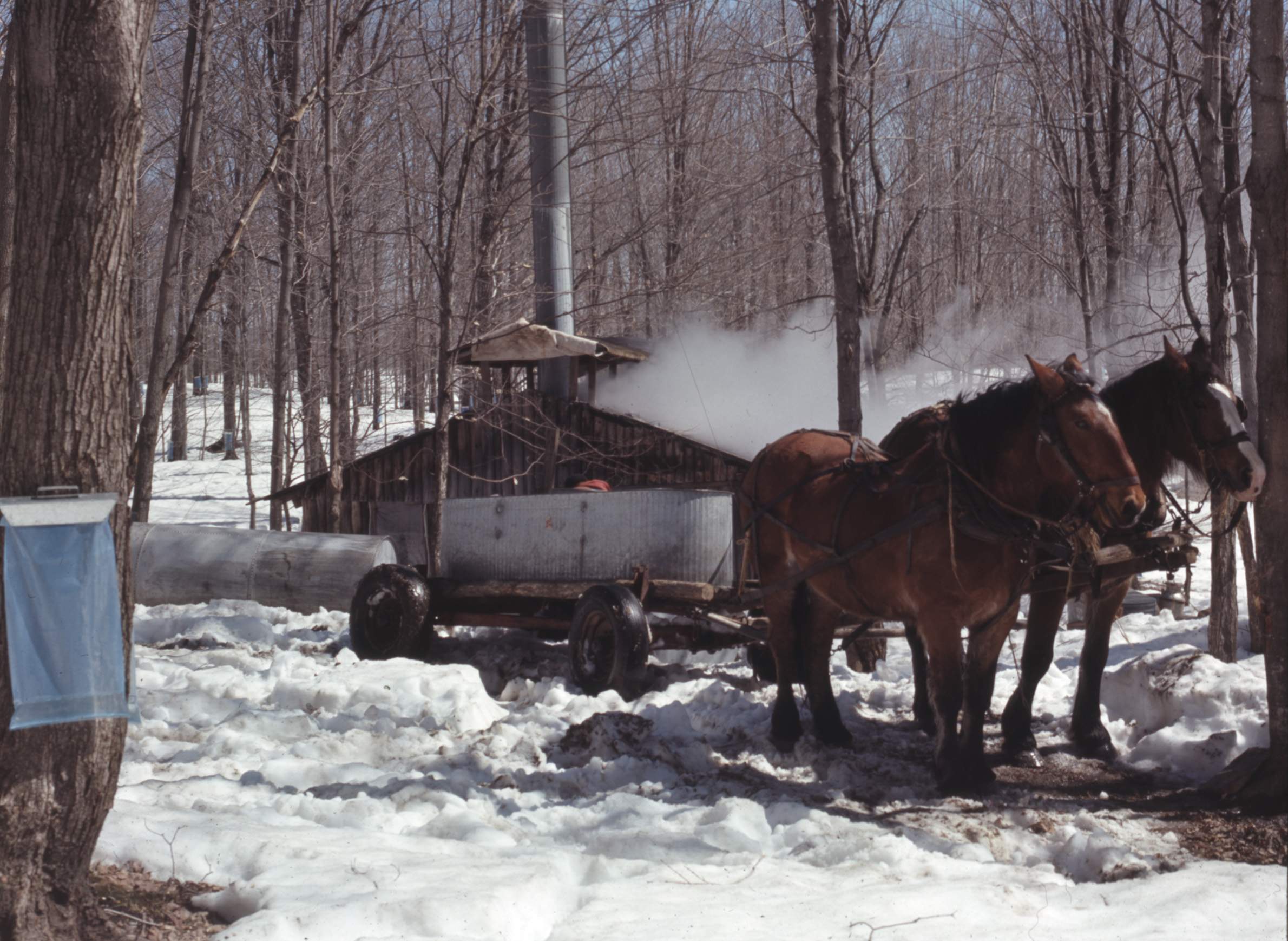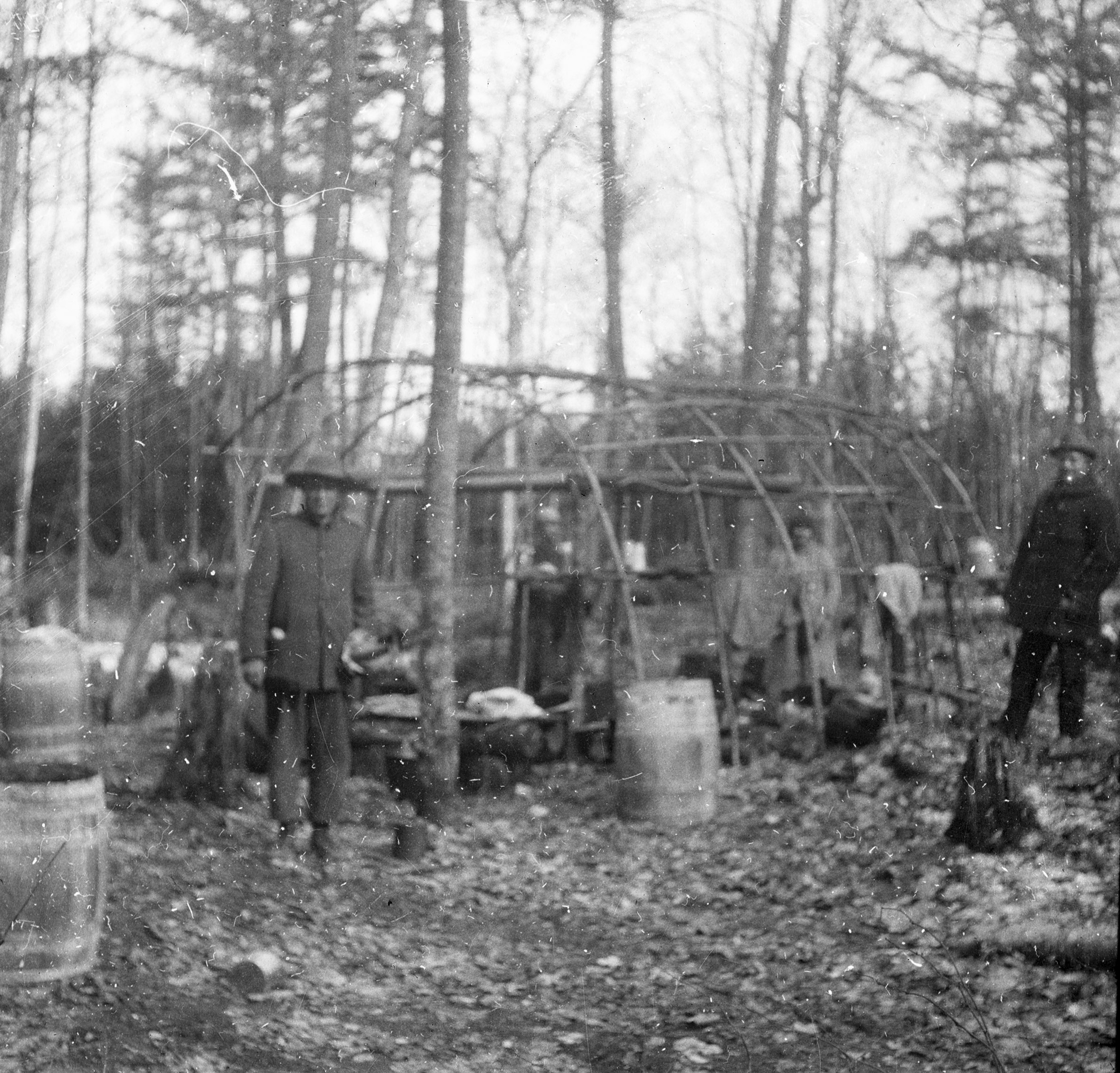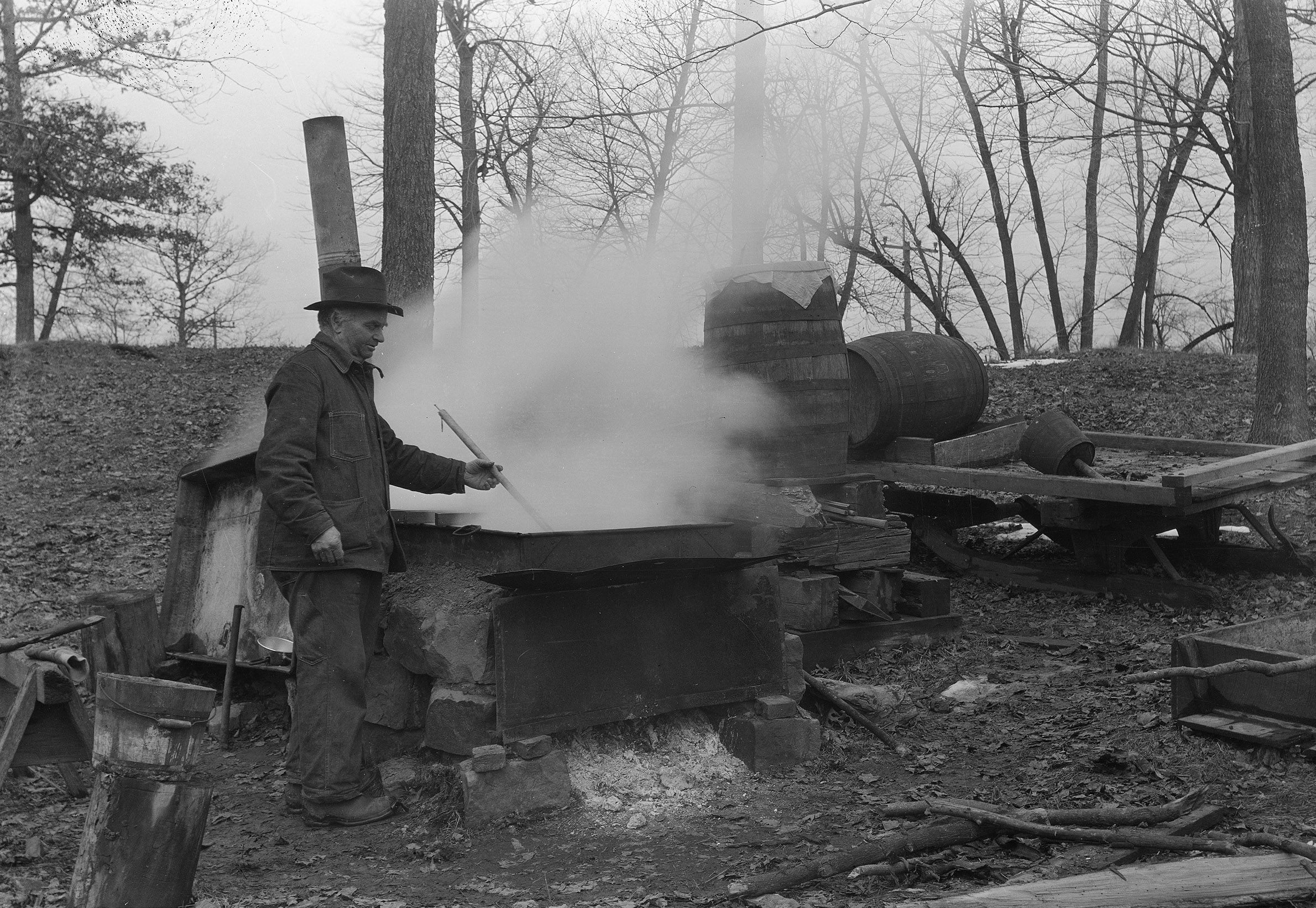
The Traditions And Transformation Of Maple Sugaring

No matter how methods have changed over the ages, a lot of time and energy go into transforming the springtime sap flows of maple trees into sweet, sugary syrup.
Within a relatively narrow and unpredictable window during the early spring, syrup producers tap maples to collect large amounts of clear, runny sap. Sugar is the sought-after ingredient, but it makes up only a few percent of the watery liquid flowing from the tapped trees.
So, to raise the sugar content to an acceptable level for pancake smothering, producers must first process the sap they've gleaned from Mother Nature. Today, whether it's done commercially or by a hobbyist, this processing takes the form of heating large vats of fresh sap over the course of hours and days. Much of the water in the heated sap evaporates, eventually resulting in a sugar-rich, sticky amber syrup.
"It's a lot of work," said Susan Denholm, a naturalist at the Aldo Leopold Nature Center in Monona, during a Sept. 18, 2018 talk she gave for the Wisconsin Historical Museum about how the tools and methods of maple syrup production have changed over time. The talk was recorded for PBS Wisconsin's University Place.
Long before the 21st century, when elaborate tapping systems and chemical analysis aid in the mass production of maple syrup — and connoisseurs concern themselves with the fine details of syrup grades — Native peoples in North America discovered the sweet potential of spring tree sap.
The precise circumstances surrounding the origins of maple syrup are lost to history, though its use in Native communities is supported by tradition, oral histories and early written accounts of European explorers, Denholm said.
"Because we didn't have recorded history, the history of people turning sap into syrup is going to passed down by stories and legends and myths," she said, recounting one of the most well-known legends involving a Haudenosaunee chief and his family. Other tribal communities have passed down their own origin stories.
Denholm described the various tools and methods developed to collect and refine maple sap. Among the implements developed by Native Americans were wooden spouts, known as spiles, as well as makuks, watertight vessels made from birchbark and purposed for collecting and transporting sap (alongside many other uses).
When European settlers in North America started producing syrup, they used metal taps and vats. These producers transported harvested sap to cook sites by carrying yokes hung with buckets. As commercially-minded operations emerged in the 19th century, other changes to maple syrup production included the use of horses, barrels and structures to house the evaporating vats, often called sugar shacks.
In 19th and early 20th century Wisconsin, maple syrup production was largely a side business for farmers.
"It was a very normal thing for a dairy farmer who had a lot of woods to also be a maple sugar farmer," Denholm said.
The introduction of new materials heralded even more changes to syrup production later in the 20th century. Plastics in particular transformed how many producers approach their work. For instance, many contemporary operations use networks of plastic tubing that collect and deliver sap to a processing site from hundreds of tapped trees all at once. New processing tools have also spurred producers to think beyond syrup and make a whole host of sugary maple treats.
"Whether it's maple syrup, maple cream, maple candy, maple cotton candy ... or maple sugar, it's all the same story, which is: It's sugar made in trees that we get to condense and have for ourselves," Denholm said.
Key facts
- The precise origins of maple syrup production are unknown. Multiple Native American legends hint at the long ago discovery that the springtime sap of sugar maples (and other tree species) contained sugar. The first written account of maple sap harvesting and refining comes from a European who wrote of his travels in North America in the mid-16th century.
- Wisconsin accounts for about 6% of the production of maple syrup in the United States, which in turn accounts for about one-quarter of worldwide production. Canada produces the other three-quarters of maple syrup.
- How much sap is required to make a gallon of maple syrup depends on the sugar content of the sap. A typical sugar content of 2% requires about 43 gallons of sap to make one gallon of syrup.
- Maple syrup production is confined to a very short window in the early spring each year when daytime temperatures get warm enough that sap can flow and nighttime temperatures dip back down below freezing.
- In an average year, sugar maple sap flows for about five weeks in the spring, though the amount of time is highly variable, depending on the weather, and periods of high flow may be quite brief.
- Among the many changes to maple syrup production over the decades has been the type of fuel used. For centuries, Native Americans and early European settlers burned wood to heat maple sap, but most commercial maple syrup producers use fuels like propane, which burns hotter and allows for more precise temperature control.
Key quotes
- On the role of weather: "All it takes is the weather. If it gets really hot day after day, we're not going to have that pressure; we're not going to have that flow. If it gets freezing over for a whole week, sap may stop completely, that's normal."
- On the importance of considering a tree’s needs relative to its size and sap output: "We are removing energy that might be needed by the tree, so we only put one tap into a tree that's 10 inches in diameter. As the trees get bigger, as it goes to about 20 inches in diameter … then we’ll put in a second tap."
- On one unique technique involved in harvesting maple sap: "Typically around 10 in the morning it'll start to pick up, and so we typically will tap on the east side of the tree so the sun hits that first."
- On the historic connection between maple syrup and slave-based sugar cane production: "Sugar was expensive in the 1800s. It was coming from the West Indies, [and] it was made with slave labor. About 1860, the price of sugar came down, and the demand for maple [syrup] also went down. So there wasn't a lot of development going on until around the 1900s when … the price of sugar was going up and the idea of having a homegrown source was there."
- On the many natural minerals found in syrup in addition to its prized sugar: "...[C]alcium, riboflavin, magnesium, zinc, manganese, there's phosphorus in there, vitamin A, vitamin C, iron: It really is what you find in bone-supporting supplements."





